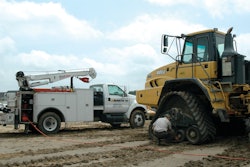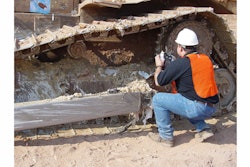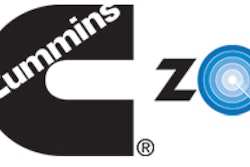Service costs you time and money. Lack of service also costs you time and money, and probably more than if you had performed the service. The trick is to maximize uptime, avoid breakdowns on site and catch the costly repairs before they happen.
It was once the norm that your internal technicians could fix just about anything in the shop or out in the field. But times have changed and technology is making construction equipment more expensive to fix, and the tools needed to fix it more complex. In short, your techs may not be able to handle the units you purchase if they don’t have the training and equipment required to identify what’s wrong and the specialized tools needed to make the repairs.
The only “out” you may have is to split the work between what can be done effectively in-house and what requires a full-service shop. I suspect using the full-service shop doesn’t cost much more when compared to an inefficient job attempted in-house.
The other aspect of in-house work is to ensure that your senior techs are doing what they are paid to do. Much like the equipment they repair, techs need to maximize their time and dollar utilization and produce a reasonable ROI. So are they actually wrenching all day, or are they standing in line waiting for parts, taking units to the wash rack or out in the field trying to locate the equipment they need to work on?
Professional service departments look for 80% time utilization from their senior techs. To make sure they’re operating effectively, the service managers assign a flat rate to the job, then compare the completed work order against that rate. Techs are expensive, and any company with numerous techs needs to track them religiously.
Get Formal With Maintenance
Using a formal maintenance program helps keep service costs under control. I’m amazed at how many companies avoid preventive maintenance and wait until a unit breaks before they perform any service. Talk about avoidable costs!
There are plenty of resources available that explain how to run a service department. If you’re just getting started on a formal program, ask your equipment dealer for a copy of its internal policies and examples of the paperwork that goes with them. Study them and start outlining what will work in your shop.
For those already running in-house programs:
- Find and keep your good techs. Pay them the local union rate.
- Send techs for annual training to learn about the latest technology.
- Supply the shop with the analytical and shop tools the techs need.
- Use telematics systems on your biggest and/or most costly units.
- Keep up with annual preventive maintenance programs.
- Measure your techs’ time and dollar utilization.
- Assign time or flat rate numbers to all service work.
- Compare work orders against expected time to complete the job.
- Digitize the service work as much as you can.
- Have “helpers” assist your techs so they can keep wrenching.
- Use a fully loaded shop rate for the techs — pay plus taxes plus benefits.
- Parts cost should include freight plus an overhead charge.
- Investigate any units that require maintenance costs that equal or exceed 30% of the orderly liquidation value of the unit. Costs that high usually signal a replacement unit is required.
The key here is to keep your techs wrenching 80% of the available time.
Can’t keep up with a formal maintenance program? Then I suggest you rent more equipment or outsource the maintenance. The rental company you use is in the same predicament and has to make its units rental ready. It may be a good outsource selection to help maintain your fleet.
Even if you’re outsourcing, keep track of the hours per inspection for each type of unit and use that as an internal guideline in case any internal preventive programs find their way into your shop.
I mentioned that the cost of not doing maintenance may, in fact, cost you more than if you did. Let’s get back to that next month.



















